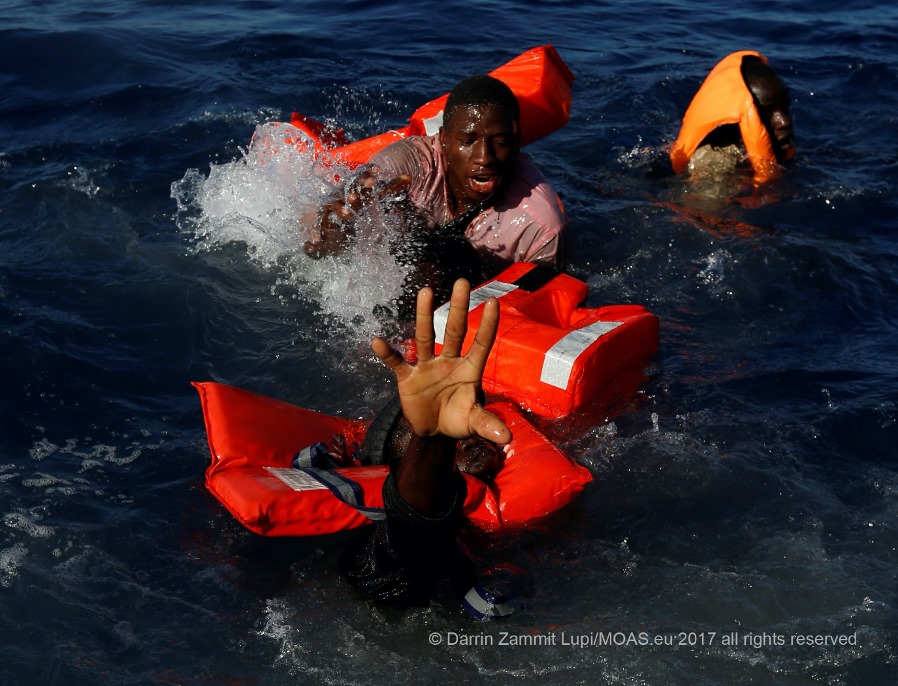Tomorrow marks the 10th anniversary of the tragic shipwreck in Lampedusa where, on October 3rd 2013, 368 migrants lost their lives. This date later became the European Day of Memory and Welcome, in remembrance of the victims of shipwrecks more widely, but also as a warning not to close our eyes to the deaths that continue to occur daily.
Globally, around 110 million people have no alternative but to leave their homeland to escape war, persecution, violence, human rights violations, extreme poverty and the damage caused by climate change that has rendered many areas uninhabitable.
Most of these, around 62 million people, are internally displaced persons; others, some 25 million people, are refugees who have crossed national borders in search of safety, often to neighbouring countries, which themselves face problems of poverty and political instability.
The Mediterranean Sea plays a pivotal role in this global picture. The first nine months of 2023 have been significant, in terms of migratory movements. Little seems to have changed as compared to 10 years ago, with the exception of the inhumane number of people who have lost their lives at sea, which increases day by day. Nothing has been done by national and international institutions to ensure that people fleeing from violences and extreme poverty experienced in their countries of origin can access safe and legal channels of migration. And so, even today, people are forced to rely on human traffickers, putting their lives at risk.
At the MED9, held in Malta, which was attended by France, Spain, Portugal, Italy, Malta, Greece, Cyprus, Slovenia and Croatia, the leaders underlined the importance of a joint approach at the European level through adequate amendments to the Pact on Migration on Asylum so that the protection of fundamental rights and international obligations can be guaranteed.
The situation in the Mediterranean reflects the migration policies adopted by Europe and the problems affecting the African continent. The story of every migrant who attempts to cross this sea bears the marks of what is happening in their country of origin; from the conflict tearing Sudan to that in Congo, from the fighting in Niger to that in Somalia, from the violence in Burkina Faso and Mali and so on. In other territories, however, the local population is forced to cope with political instability, militarisation and the presence of armed terrorist organisations, and their threats, violence and kidnappings, that are becoming increasingly widespread in the sub-Saharan region. In these contexts, the poverty rate is extremely high. In addition to all this, there are droughts and extreme climatic phenomena and the exploitation of territories for natural resources.
The arrival of increasing numbers of boys and girls on European shores (11,650 unaccompanied minors landed in Lampedusa, including some as young as three years old) also reflects what vulnerable individuals are forced to endure. In conflict-affected areas in Africa, there are too many stories of killings, mutilations, and sexual violence. The phenomenon of child soldiers is also widespread. In West and Central Africa alone, as of 2016, there were more than 21,000 minors engaging as combatants in violent conflicts.
Many of them are also exploited in the mining of gold and precious stones, coltan, cobalt and the minerals that power the batteries of smartphones, PCs and cars. These industries expose those in contact with toxic and dangerous substances to deteriorations in their health and wellbeing.
Regarding the symbolic images of children who have lost their lives in the Mediterranean Sea that have gone round the world – among them, we all remember the one of the little Syrian boy Alan Kurdi – the unanimously expressed emotion and subsequent outpouring of words have not turned into transformative deeds or actions. Today, minors continue to die at sea, sometimes alone, sometimes together with their mother or father, and nothing seems to have changed since that 3rd October 2013 when everyone repeated “never again”.
That episode also represents the moment when the Catrambone family decided not to stand by and watch but wanted to get involved to save the lives of those attempting the crossing. Thus, MOAS – Migrant Offshore Aid Station, was born, which from 2014 to 2017 saved more than 40,000 migrants, between the Mediterranean and the Aegean Sea.
Today we are no longer at sea, but we continue to reinforce the importance of establishing an EU-wide SAR mission and a common and fair EU policy based on solidarity. It is also necessary to adopt safe and legal migration routes that can prevent people who are forced to flee ending up in the hands of traffickers and suffering the terrible violence during the journey, inside Libyan centres and the risk of the Mediterranean routes.
Final thoughts
The implementation and proliferation of #SafeAndLegalRoutes is a valid solution which could save countless lives in the infamous sea that divides Africa from Europe – and beyond. Until this happens, every year we will continue to craft repetitive rhetoric, commemorating something that continues to repeat itself every day in the indifference and immobility of migration policies.
Find out more about MOAS’ campaign and sign our petition: https://www.moas.eu/safe-and-legal-routes/.
If you are interested in the work of MOAS and our partners, please follow us on social media, sign up to our newsletter and share our content. You can also reach out to us any time via [email protected]. If you want to support our operations, please give what you can at www.moas.eu/donate.

